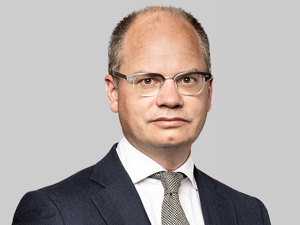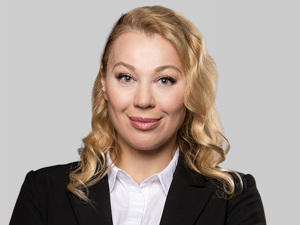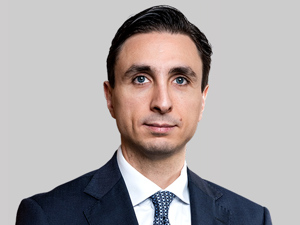East Capital Eastern Europe fund lost 5.2% during the quarter, outperforming the benchmark by 1.1%. Türkiye posted a somewhat flat performance (-2.4%), while our Turkish holdings were the best alpha contributors thanks to the strong selection. Moreover, we saw several of our key markets correcting, especially in USD terms, with Poland down 9%, Romania losing 11% and Greece down -7%. Despite this uninspiring performance, we managed to achieve significant positive alpha in Poland and Turkey. For the full year 2024, the East Capital Eastern Europe fund, posted a solid return of 12.9%, outperforming the benchmark by 7.6%.
On the macro front, we observed inflation in CEE in the range of 3-5% during the quarter. Central banks paused their easing cycle in Hungary and Poland, while we saw a 25bps cut in Czechia. The Polish Central Bank Governor has turned more hawkish, hinting at the possibility of further rate cuts, not before 3-4Q’25. Moreover, 3Q’24 GDP in the region makes for a mixed read, with Czechia up 1.3% YoY, in line with expectations, Hungary down 0.8% YoY, visibly below expectations, and Poland up 1.6% YoY, also below expectations.
Strong quarterly attribution came from Poland, where despite a weak market (-9%), we achieved 101 bps of alpha on strong selection. We believe the weak market performance was caused by the results of the US election and uncertainty regarding President Trump’s actions, especially with regards to war in Ukraine. During the quarter, we again saw a sharp correction among several blue chips and mid-caps, with Orlen down 18%, Budimex down 27%, Allegro down 27%, PGE down 22% and mBank losing 17%. We either didn’t own (Budimex, mBank, PGE) or were underweight (Orlen) in these companies, selling out of the latter during the period on weakening refining margins and further problems with a flagship petrochemical project. In the case of Allegro, we reduced our holding significantly due to the longer-than-expected underperformance of its Czech subsidiary and intensifying competition in Poland from Chinese platforms. On the other hand, we saw CCC’s stock price increase by 2%, significantly outperforming the market, and helping us achieve 12bps of alpha. We are gaining more and more confidence in the company’s new strategy, with increasing reliance on licenced brands, which should support sales but also improve margins. During the quarter, we increased our stake in the name and also met with the main shareholder and CEO who confirmed the strong growth trajectory. On the back of strong operational performance, we still see room for positive surprises on the results front in the coming quarters, assuming execution is flawless. The stock trades at 6.2x EV/EBITDA’25, with 49% YoY EBITDA growth.
On the downside, KGHM underperformed during the quarter, with its stock price declining by 32% due to disappointing stimulus announcements in China and the correction in copper prices. We still believe that copper is critical to energy transformation processes, and KGHM is one of the best exposures to copper. So, we will continue to hold the name. The second-worst alpha attributor in the quarter was Dino Polska, as the stock price gained 3.5% after solid 3Q numbers, but mainly thanks to a fairly positive outlook for the coming quarters, with further improvements in margins, less cost pressures and faster store rollout expected. We decided to start a small position in the name and will closely watch further developments over the coming months. We also saw corrections in two banks we own, namely Pekao and Alior, with stock prices down 13-14% due to a potential acquisition of an Alior stake by Pekao from PZU. The deal raises questions about Pekao’s dividend payout capacity and a possible merger of the two banks as a next step. We believe that Pekao’s management is aware of the importance of predictable dividend payouts for shareholders and will not surprise negatively. As for Alior, we believe that for the merger to happen, it will have to be at a premium on the current stock price to convince minority shareholders to accept it. We like both companies and expect double-digit dividend yields from 2024 profits, with Pekao paying out 13% and Alior 10%. Moreover, we find valuations attractive, with P/E 5x and P/BV 0.9-1.1x and ROE of around 20.5% for both names for 2025.
Another key contributor to quarterly relative performance was Türkiye, where we generated 51bps of alpha. Türkiye’s blistering rally in the first half of 2024 corrected in Q3 and recovered slightly in Q4. Our Turkish holdings recovered strongly in the quarter, up 8%, ending the year with a 34% gain. We increased exposure to off-benchmark investments and allotted 10.8% to short-dated Turkish lira bonds, which performed 11%, with yields significantly above 40%. A slower-than-expected inflation decline has softened market conditions, making us more selective. We added Hepsiburada - the second-largest e-commerce player in Türkiye, valued at a 90% to 79% discount on emerging market peers. The stock was up 43% during the quarter. We also added Logo Yazilim, which was up 23%. Logo’s track record in compounding revenues is excellent, with 12% CAGR in the past 10 years and 15% CAGR in the past 5 years. In the past 2 years, they have struggled with sky-high inflation, and their stock de-rated from a 5-year average 7x EV/EBITDA to 4.5x. In 2024, the company was able to demonstrate improving cash flow metrics, which we believe will turn towards positive free cash, with greater macroeconomic stability, leading to a strong a re-rating. The outlook for the Turkish market was brightened by a 30% minimum wage increase, signalling a potential CPI move to below 30% by the end of the year. East Capital was one of the few emerging market specialists that continued to invest in Türkiye, despite the challenges, because we believed in the turnaround story early on and found many high-quality and good value companies. Now, it is more difficult to find companies at the same highly-discounted valuations. But if inflation falls back into the 10%s, Türkiye may well become a country where we make long-term investments to take advantage of stable growth.
Our Austrian banks helped us gain 32bps of alpha, with Erste continuing its strong run, its stock price up 13% on the back of strong 3Q numbers and decent initial guidance for 2025. We continue to like the bank, which we believe is good quality, with an undemanding valuation of P/E 7.5x, P/B 1.1x, ROE 15% for 2025, offering almost 8% shareholder remuneration (dividend plus share buyback). During the quarter, we also added Raiffeisen, whose stock is up 1%, as we believe it can benefit in the case of an end to the war in Ukraine or any ceasefire, with potentially less pressure related to Russian exposure from regulators and/or an easier path to a disposal of Russian operations. The company (ex-Russia) is attractively valued, as it trades at 4x P/E, 0.45x P/BV, with 12% ROE for 2025, and we see the potential for rerating.
Our Austrian banks helped us gain 32bps of alpha, with Erste continuing its strong run, its stock price up 13% on the back of strong 3Q numbers and decent initial guidance for 2025. We continue to like the bank, which we believe is good quality, with an undemanding valuation of P/E 7.5x, P/B 1.1x, ROE 15% for 2025, offering almost 8% shareholder remuneration (dividend plus share buyback). During the quarter, we also added Raiffeisen which is attractively valued, as it trades at 4x P/E, 0.45x P/BV, with 12% ROE for 2025.
Elsewhere in the region, we saw 14bps of positive alpha from Hungary, with the market correcting slightly, down 1.5%. Among our holdings, OTP Bank gained 3.2% on the back of good numbers and a continued attractive valuation, as the bank trades at 5.8x P/E, 1x P/BV, with 18.5% ROE for 2025. Another strong attributor was Magyar Telekom, which gained 9.8% during the period, as 3Q numbers reconfirmed yet again its strong operational performance, which solidifies our and the market’s expectations for an attractive dividend payout. On the other hand, we saw a 16% correction in Richter’s share price, as some investors decided to take some profits after a strong performance earlier. We still like the name as it trades at an attractive valuation.
The worst performance came from Czechia, where we lost 41bps. We do not own any stock in the country, and we did see a 1-5% price increase in all three benchmark stocks: CEZ, Komercni and Moneta. We remain sceptical about the stocks. In the case of CEZ, we do not currently see room for significant dividend payouts with the windfall tax still in place, and we find the current dividend yield of 5% unattractive. In the case of banks, we don’t find valuations of 10-12x P/E, 1.3-2.1x P/B very appealing, considering ROEs of 13-17%, and we prefer banking exposure in other countries. The sluggish performance in Greece, down 7% was, attributed to the EUR 5bn of placements over 12 months, which diverted attention from other stocks. While Romania, down 11%, struggled due to political instability and a weaker economic outlook.
2024 was an eventful year, during which we consistently outperformed the market through active portfolio management and opportunistic rotation into new investment opportunities. The region remains vibrant, and we are optimistic about key developments in 2025, including outpacing the rest of Europe in GDP growth. And about Greek banks offering the highest shareholder remuneration relative to stock prices among European banks, and the substantial 15–20% decline in inflation in Türkiye, which is likely to attract foreign investors. We also continue to like the Polish and Hungarian markets, with valuations still at attractive levels. We remain optimistic and continue to look for the best selection of high-quality stocks, with growth and strong balance sheets, as our East Capital New Europe fund is trading at an undemanding 7.5x P/E for 2025, offering 4.9% dividend yield.
Performance in USD net of fees.
The information should not be used as the sole basis for an investment. Please read the Prospectus and the KID, which are available on the fund page. This publication is not directed at you if we are prohibited by any law in any jurisdiction from making this information available to you and is not intended for any use that would be contrary to local laws or regulations. Every effort has been made to ensure the accuracy of the information, but it may be based on unaudited or unverified figures or sources.












